When felt and stitch artist Jeanette Appleton saw a yurt at a museum for the first time, her perception of the relationship between felt and ‘place’ was forever changed.
Russian and Mongolian nomads traditionally used huge felt linings to insulate their yurts. The felt was often made from wool of the flocks of sheep that accompanied them, and the overall yurt design was made to be dismantled and rebuilt depending on where the nomads traveled. The yurt—and its use of felt—was influenced by the ever-changing environment within which it was placed.
This and other travel discoveries are reflected in Jeanette’s main collection of work inspired from journeys and consideration of the commodification of land as a collected memory of place or nostalgia through the tourist view and souvenir. And her notions of merging textile art with ‘borrowed spaces’ has also created remarkably interesting installation art.
We invite you to enjoy this look into Jeanette’s artistic journey, as well as a sampling of some of her techniques. You’ll also learn how the pandemic’s forced stay-at-home lifestyle has led Jeanette to reconsider notions of ‘travel’ in her art.
Jeanette Appleton’s international recognition has developed through various projects and exhibitions since 1990. She has researched historical and contemporary issues of the nomad and land, with funded exploration in Russia, Mongolia and the Caucasus. Jeanette has also participated in international creative exchanges leading to group exhibitions in the USA, Germany, Norway, Denmark, Georgia and Japan. Jeanette also lectures and teaches across the globe.
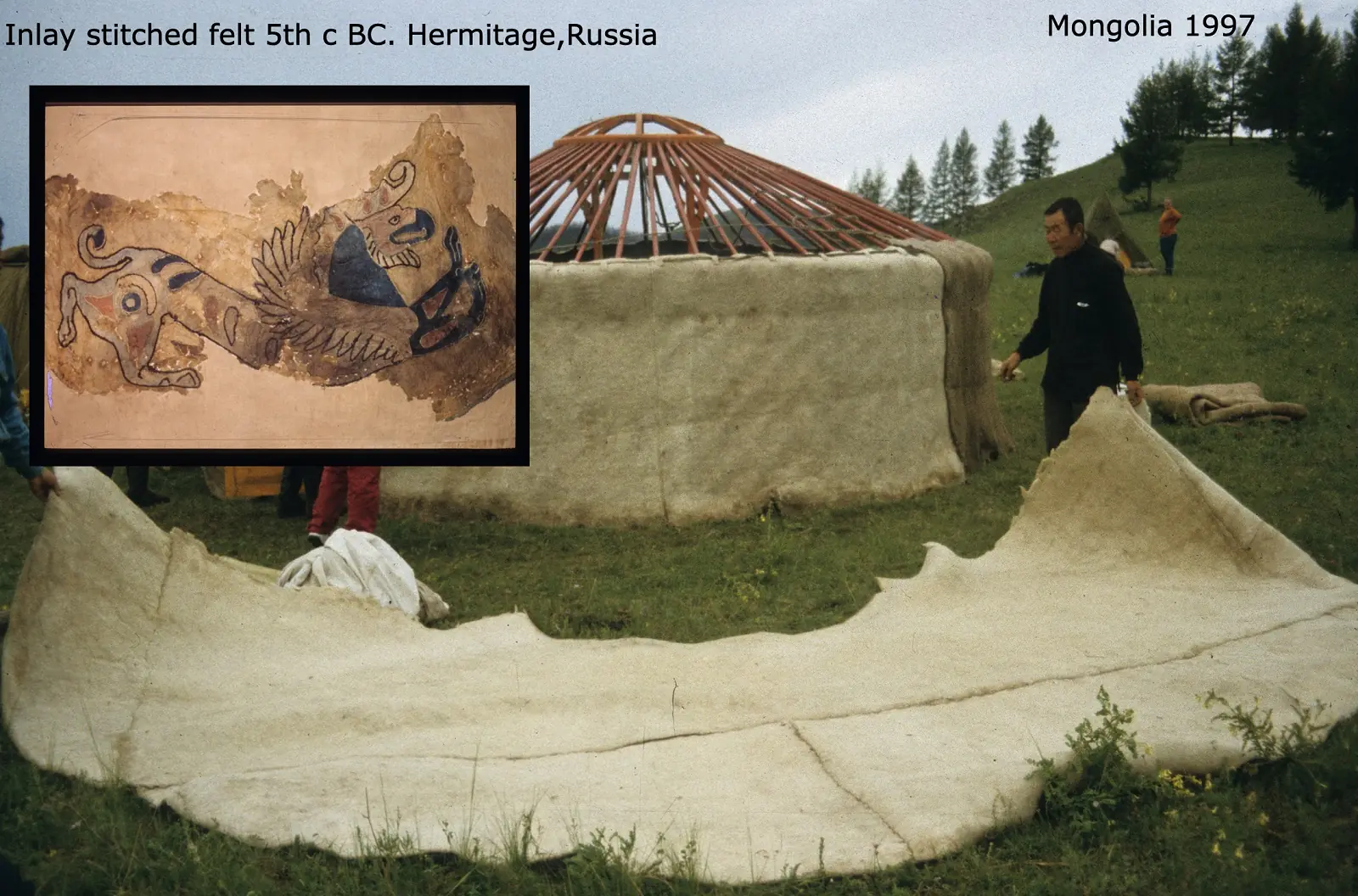
The magic of a yurt
TextileArtist.org: What initially attracted you to textiles as a medium? How was your imagination captured?
Jeanette Appleton: My specialism in felted textiles was discovered during my Post Graduate course in Textile Art at Goldsmiths. A series of doodles I produced during introductory workshops on different textile techniques seemed to suggest an inside/outside quality.
This began a series of explorations through drawing, textile sampling and research. It also led me to the Horniman Museum where I saw a yurt for the first time. It gave both the physical and emotional structure to the idea of inside/outside. A nomad shelter had been made from materials sourced from outside to enclose a protective space on land that was not owned, but borrowed.
That linked to my concern and issues related to home ownership and the land. And it provided the ideal material and technique that had direct connection to the landscape, which was to be my main theme of work.
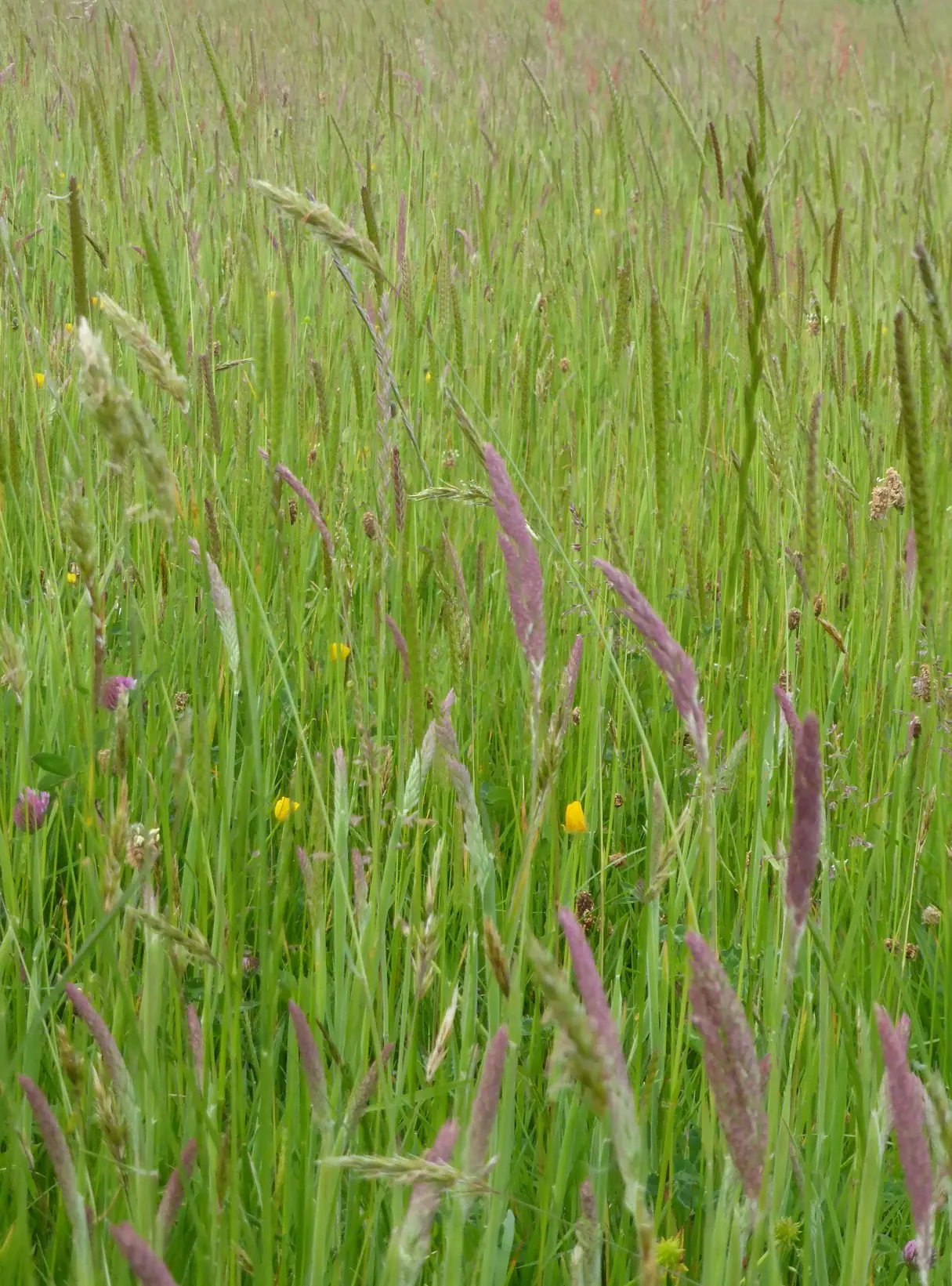
What or who were your early influences and how has your life/upbringing influenced your work?
I was born just after the war, so ‘make do and mend’ was still a feature of my childhood. My mother made handmade rugs to step on and a patchwork cover on the bed. Her sewing machine and knitting needles were permanently available, so work and life became one in the home and my continual connection with textiles.
The daily walk around the fields game me a natural affinity with nature which still provides source for my textile ideas.
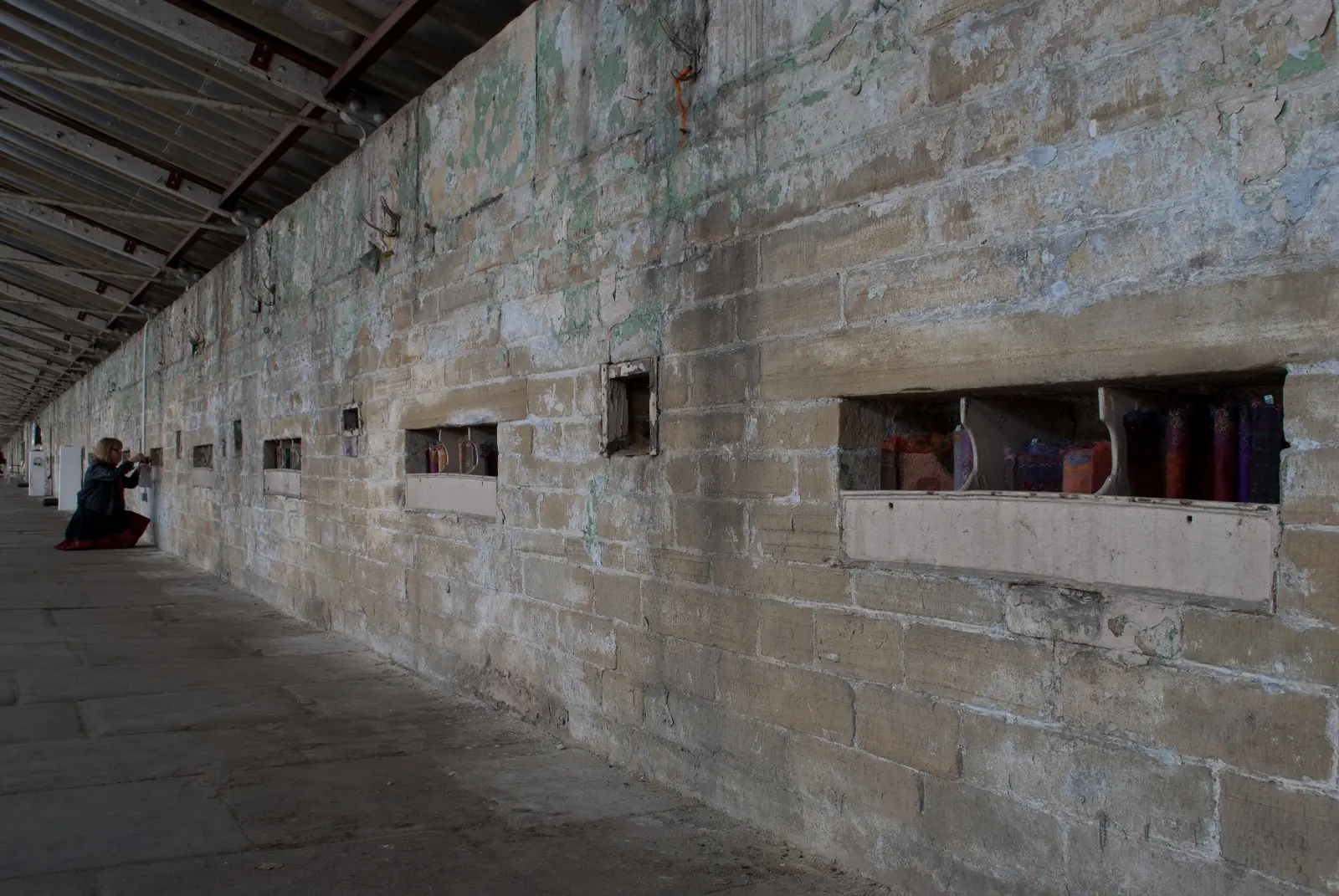
What was your route to becoming an artist?
I originally trained in embroidery in a part-time course linked with Nottingham University for adult teachers training. I sampled various embroidery techniques, and my new work of small framed textile collages and cushions were accepted at Liberty’s and Heals stores in London.
But I later needed to expand from embroidery to other areas of textiles, because I felt limited in expressing my ideas.
I attended Goldsmiths Post Graduate Textile Art course part-time while I was teaching courses in drawing, design, fashion and textiles at my local college.
Goldsmiths gave me the opportunity to explore various techniques. But most importantly, I discovered not only was the textile itself important, but it was also important to consider the meanings and other ideas cloth can portray. This is where felt took over my life!
Now using a material and technique directly connected with the nomad, I, too, became a traveler from invitations to teach and exhibit in the United Kingdom and overseas.
Later I gained a degree in Fine Art at Middlesex University which encouraged me to consider the space around the cloth. To create a textile with a space, both influencing the process of ideas and construction.
And that led me to opportunities to create installations in various interesting places and projects mostly with felt. The ‘Through the Surface’ exhibit curated by Professor Lesley Millar is a good example. A group of selected international artists were commissioned to respond to the space of a spinning room in Salts Mill, Yorkshire 2003. I used strips of needle felt made at my University of Huddersfield residency in 2002 with hand felting to produce a row of books placed in the bobbin recesses along the wall.
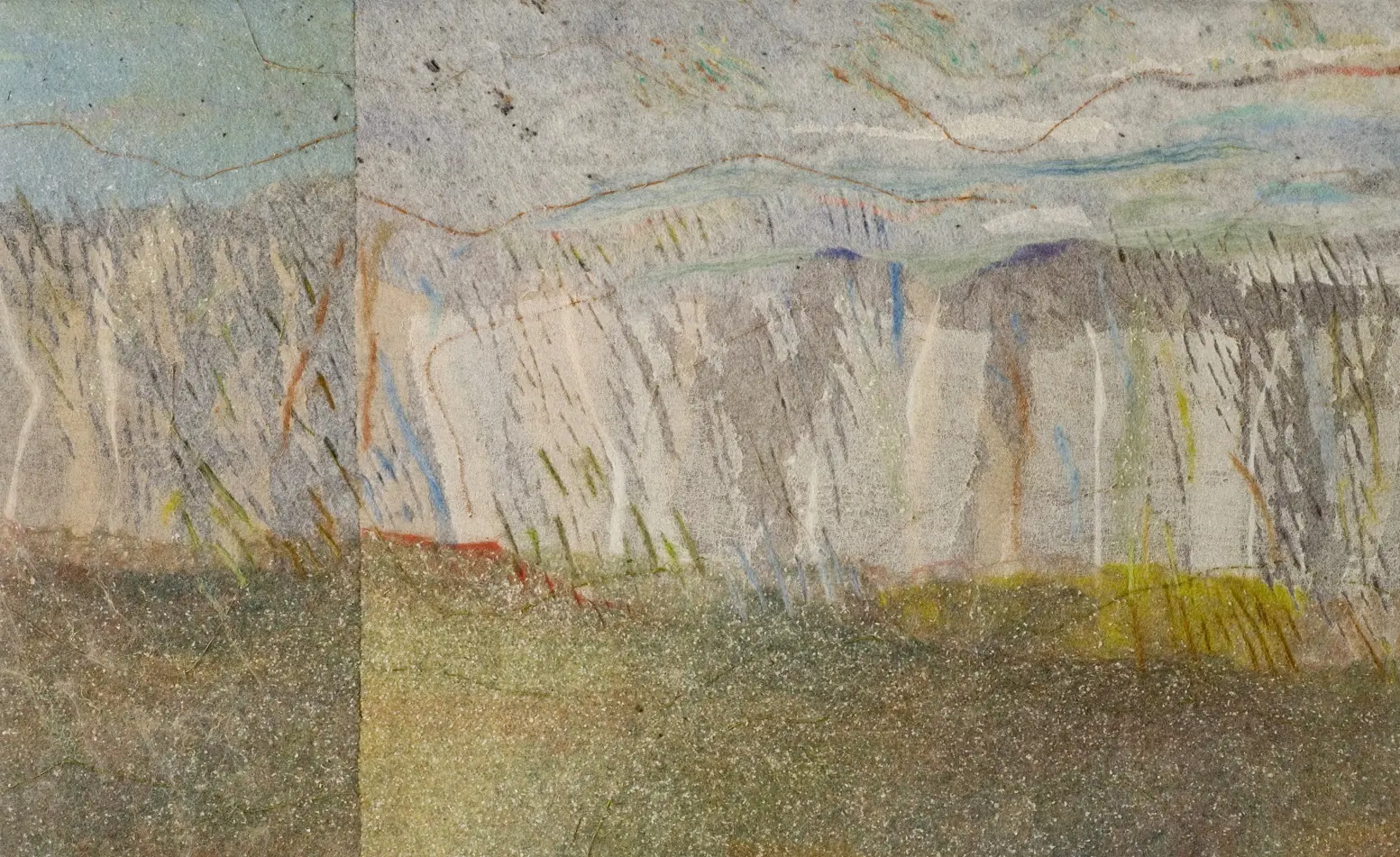
Felting shadows and hills
Tell us about your process from conception to creation
My starting points are various: drawings, photos, research around the project. But I also pull from an archive of written notes and samples.
I only work on a design when I am undertaking a commission. I prefer to work instinctively, as I enjoy the surprises and the unknown conclusions. This is fed from a lot of research, often on various projects, which influence each other in the process.
For example, I had worked on a series of small felt and stitched pieces inspired by the amazing variety of wild plants found around my studio in Southern Spain. These sketches introduced the possibilities of exploring the contrasting contours of the hills of the Alpujarras (Spain) and the Howgills (England) during a residency in Farfield Mill Heritage Centre in 2010.
Through drawing and photographs, I considered how the Howgills have similar and different light and shadows to that of Spain. The shadows were not made from the moving rain clouds, as in the UK, but from the static tree and ridge forms in full sunlight. This research produced two wall works inspired by the two sites.
The dryness in Spain suggested cutting into the surface of the felt. Whereas, the wet of the UK inspired me to place threads under the wool before I layered the wool on top. Once felted, the threads would protrude slightly creating a shadow quality on the surface.
I mostly use merino wool tops, but also other fibres if the idea suggests this. While on the residency at the University of Huddersfield, I used small amounts of plant fibre mixed with merino in the needle felt machine which produced cloth with textures like that of wildflower meadows.
I use the wet method for handmade felt and add various fabrics and threads in the process. Some of the threads are used on top of the finished felt with basic running or stem stitch with various yarns depending on the effect I want.
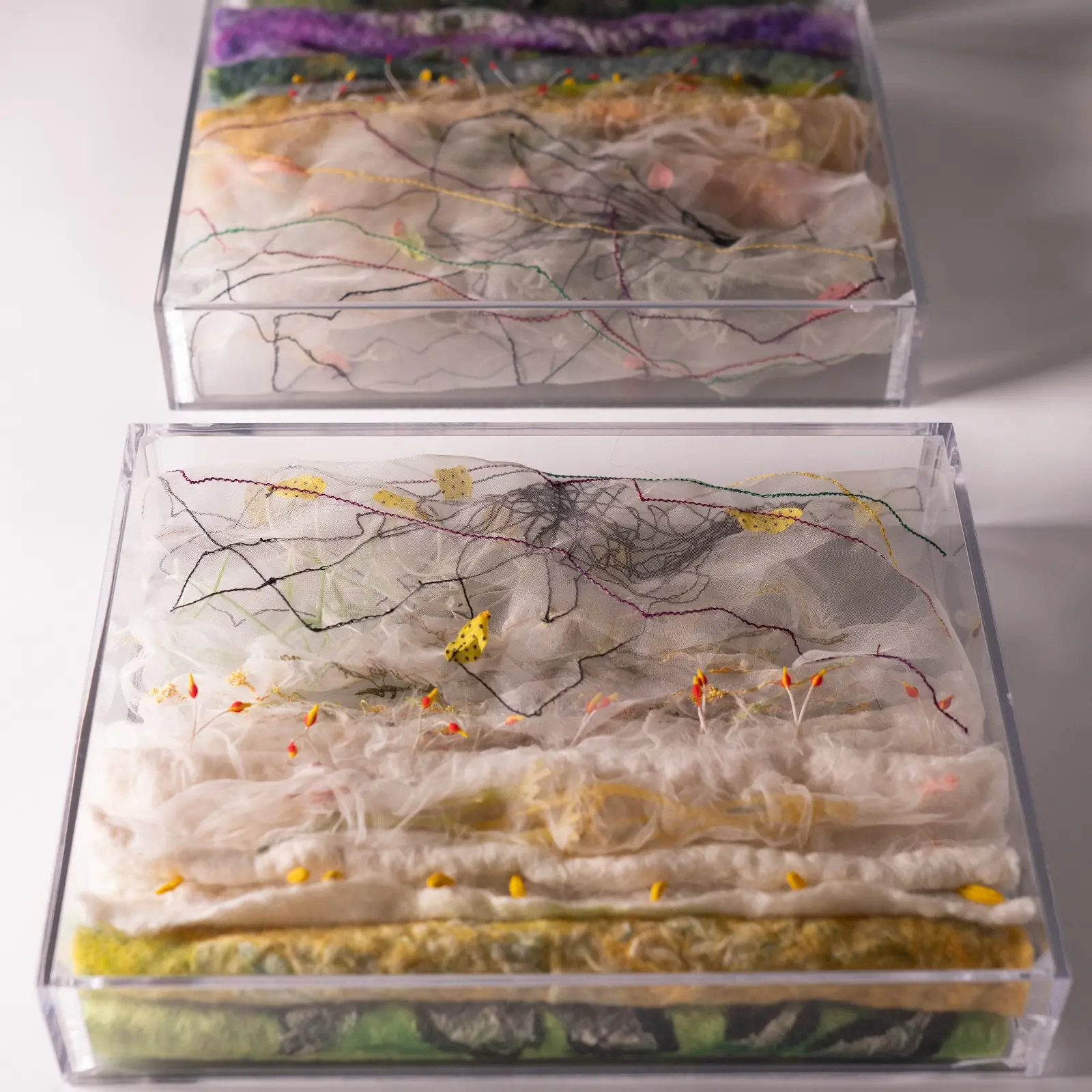
Tell us a bit about your chosen techniques and how you use them
Felt can be made anywhere, with no tools or equipment, and crosses over many disciplines. A basic felt can be made by just thinly layering wool on a surface and agitating the layers with your hand with a little warm water and soap. I found I could make it on the move as I travelled around the world to share my method and ideas.
For those who have not made felt before, I suggest fine merino wool tops is easiest to work with. They can be laid thinly across one another, and they interlock quickly to produce a firm, thin fabric. They will bond easier if each layer is placed in opposite directions.
Using two or three thin layers of coloured wool tops will give you interesting colour mixtures.
Next, cover the layers with a synthetic net to keep the structure together, and then sprinkle the whole thing with warm water and a little olive oil soap. Gently agitate the surface to gradually shrink the wool until it becomes a firm cloth. Rinse out the soap and leave to dry flat.
You can stitch on felt with various stitch types and yarns, and you can also appliqué fabric or cut and reassemble as for inlay appliqué. There is a lot of information online on various methods and where to buy materials.
Experiencing new landscapes inspired my work, and I continued to create within the frame of the felt textile. Exploring layering the coloured tops for the painterly qualities and increasing the scale of the marks increased the size of my wall work.
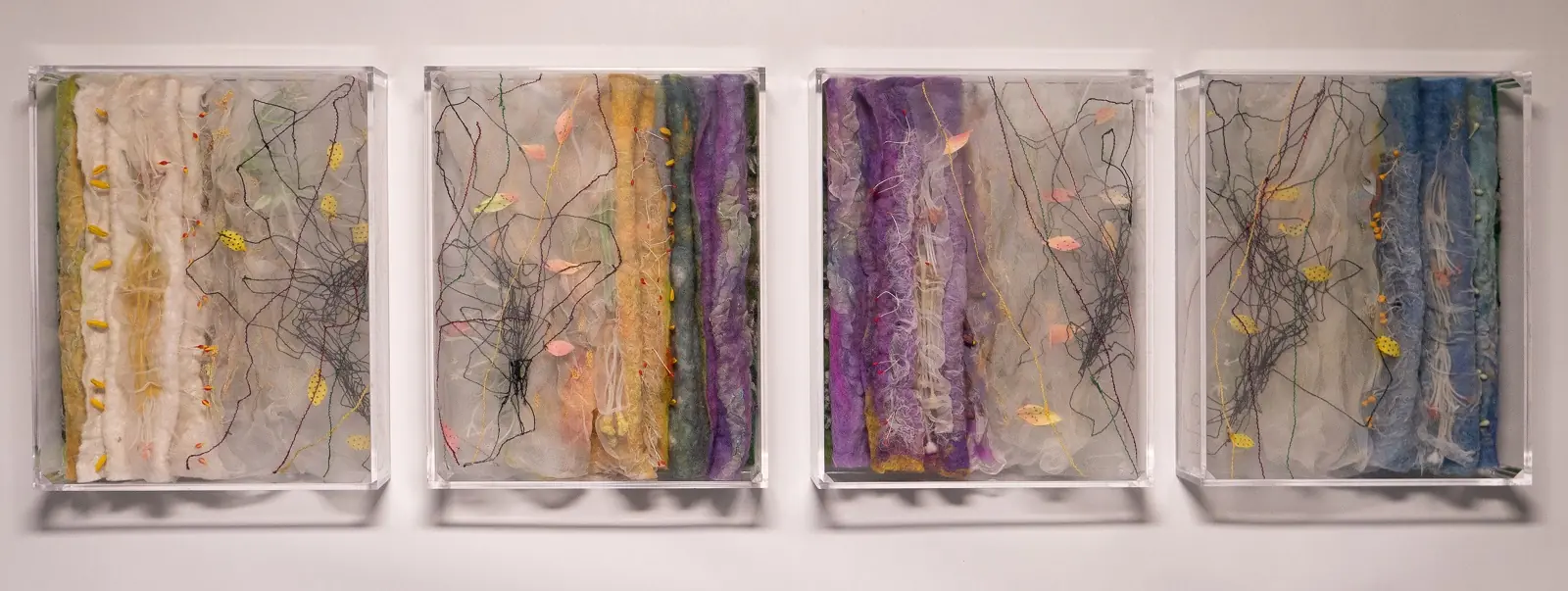
What currently inspires you?
Global place and protecting the environment is now a major concern, and the pandemic has emphasised the urgency. The place of nature matters, and in my recent work ‘Pollution and Pollination,’ I researched the path of the bee and graph lines of pollution levels.
I machine stitched both these lines on transparent cloth. When constrained within a perspex box, the stitched cloth gave a resemblance of withered stems. I wanted to suggest the loss of nature, but also a hope for protection with the enclosed space of the perspex box.
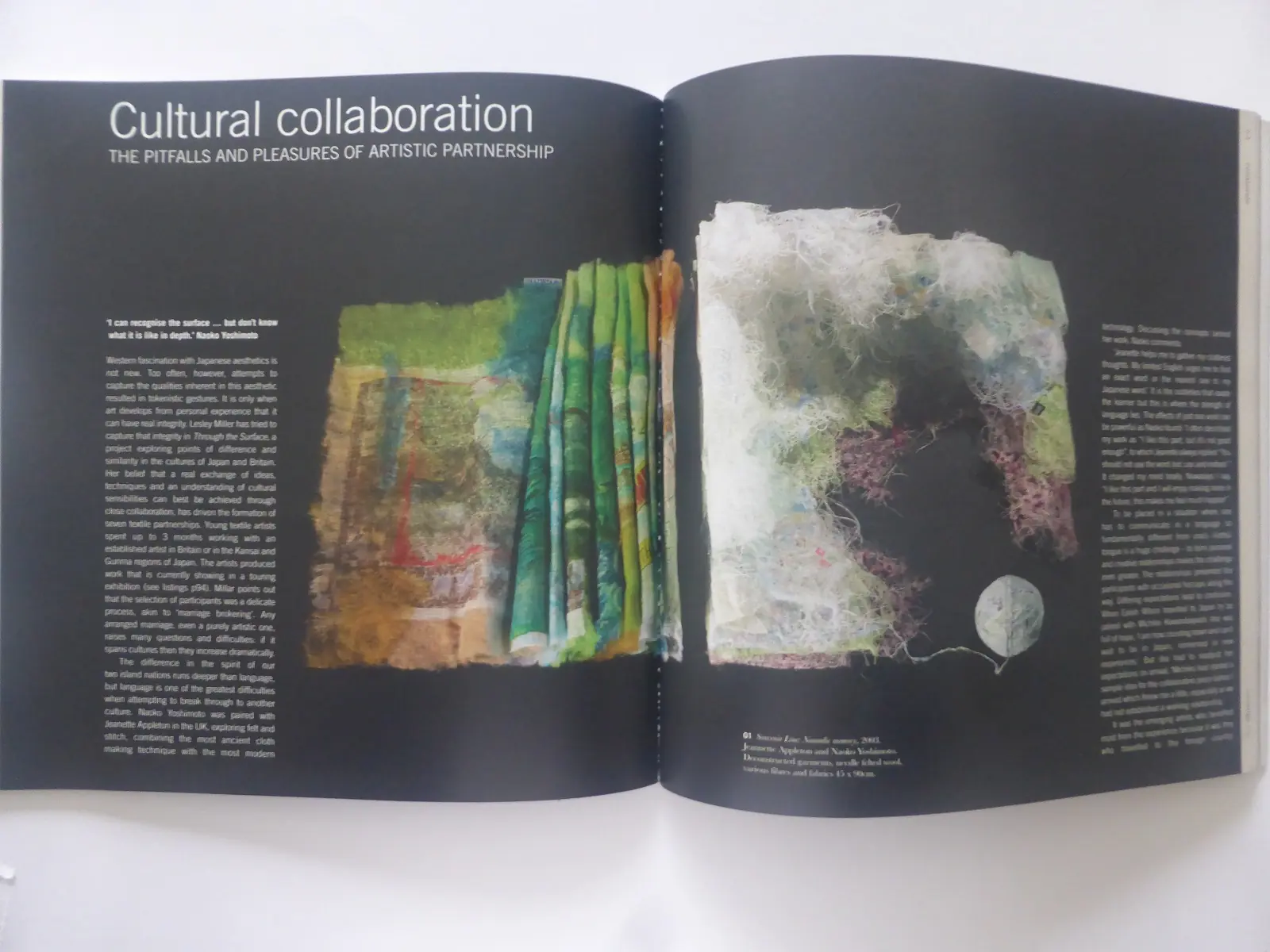
Lockdown discoveries
Tell us about a piece of your work that holds particularly fond memories and why?
Both collaborative projects ‘Felt Crossing Borders’ (2000-03) and ‘Through the Surface’ (2003) gave a learning environment not possible in a solitary studio space. International collaboration in which people leave their cultural place to work and discuss in a neutral space gives new insights into the creative process.
Cultural identities, political and personal concerns all mingle to produce contrast to one’s own ideas. Sharing the making process and verbal interaction emphasised the different approaches toward the same goal.
![Jeanette Appleton: Lock down sketch book, 2021, 22h x 19 w x 2 d cm [closed], Collage, paint, pencils](https://www.textileartist.org/wp-content/uploads/8_LockdownSketchBk-Jeanette-Appleton.jpg.webp)
How has your work developed since you began and how do you see it evolving in the future?
Inspiration has progressed from the space of home to international travel. Then a dual-site between Spain where I have a studio and the UK changed this notion to the repeated journey between the two countries.
During the isolated daily walks in lockdown, I was forced to reconsider the notion of journeys and place, which was the context of my work.
The strange new schedule gave me a unique opportunity to discover the details of nature, and time to stay still and allow the unexpected to become big moments of the day. This new experience of very early morning walks in low light or mist highlighted the tenuous details of nature.
I documented the changing marks of grass, whether walked on or off the designated path, when flattened by wind and rain, and the seasonal growth and disintegration.
This eventually inspired me to consider these subtleties with different thicknesses and types of yarns that can create a depth of mark and spacial illusions. I threaded the yarn over the surface by picking up minute filaments of fibre for a couching effect.
A transitory feeling is achieved by leaving the yarn ends loose which could easily be pulled away. This echoes natures dangerous situation and suggests the transitory marks of nature which my work will now consider.
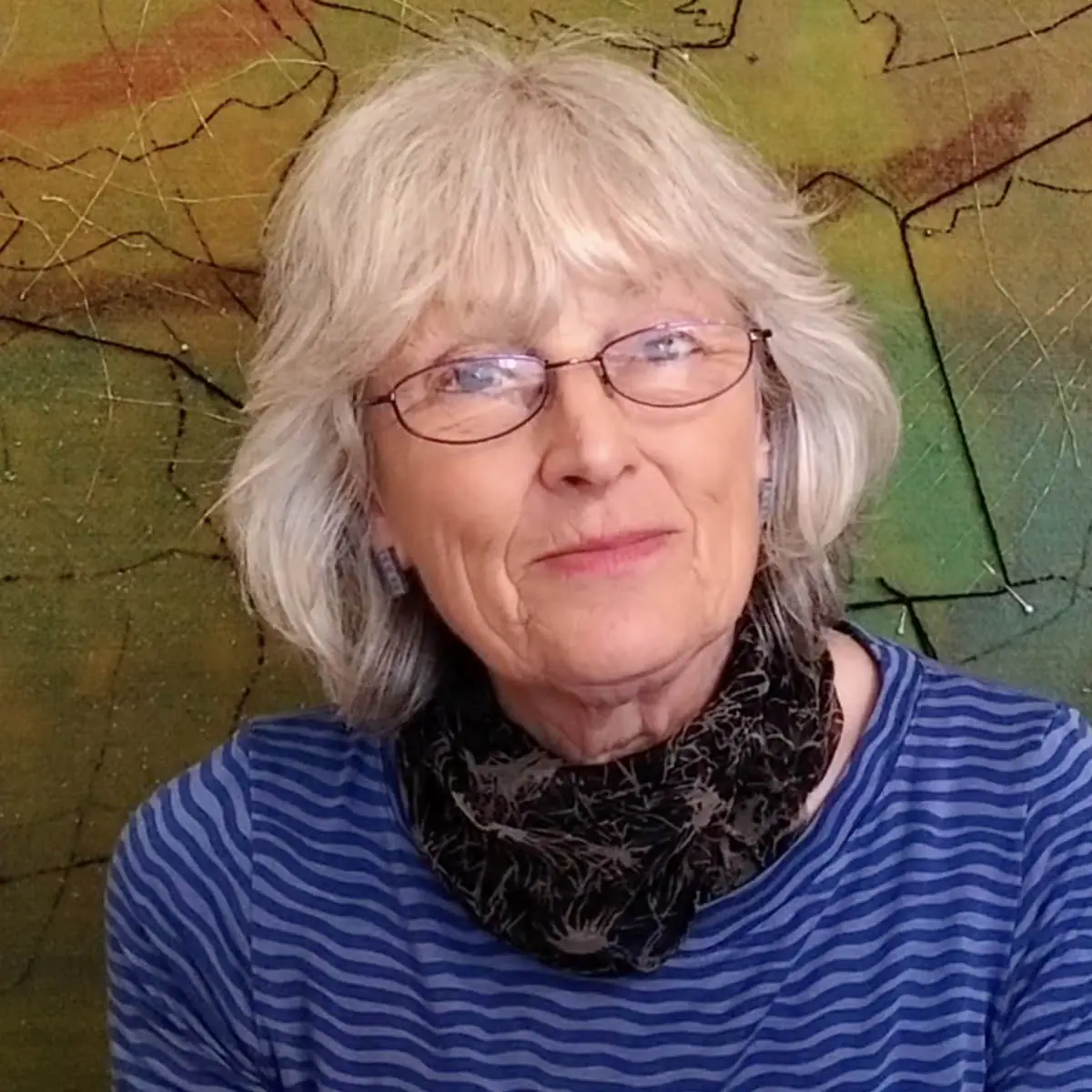
For more information visit jeanetteappleton.com
Were you inspired by Jeanette’s use of felt and thread? Let us know below
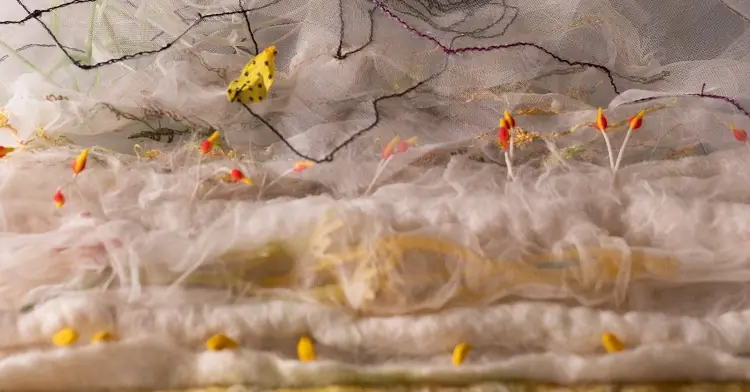
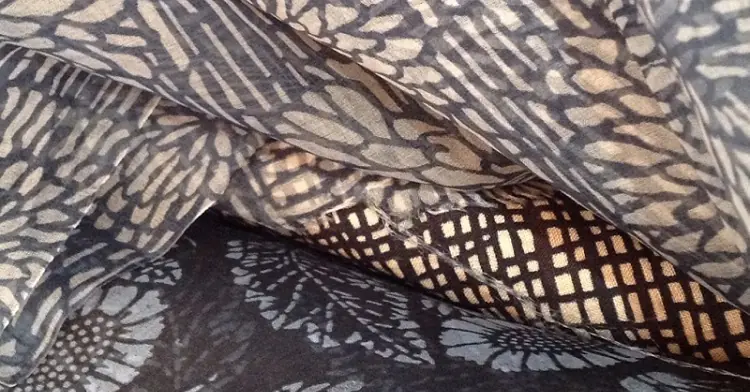
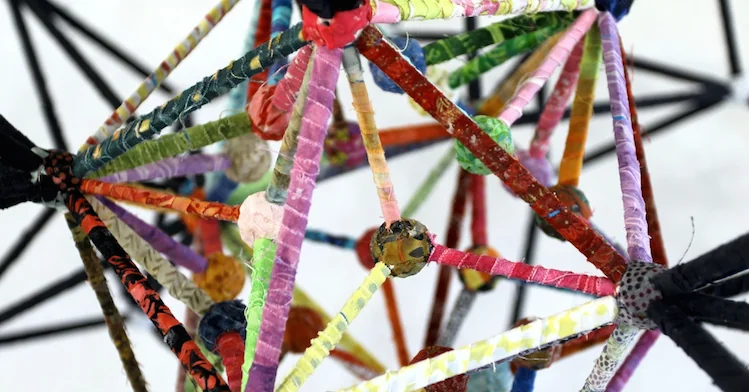
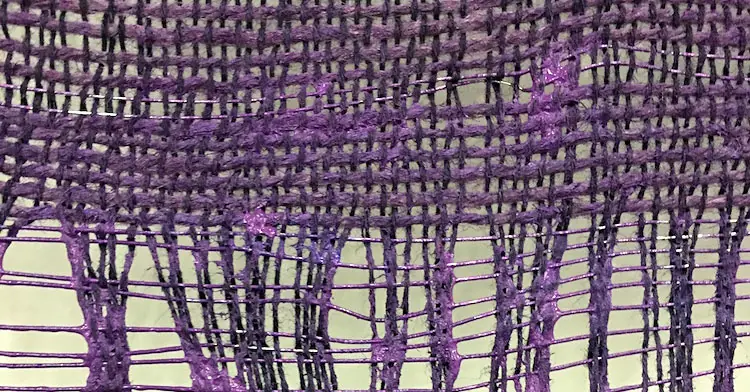
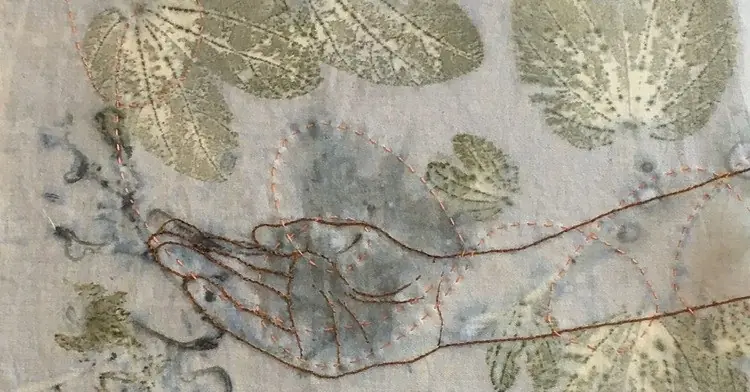
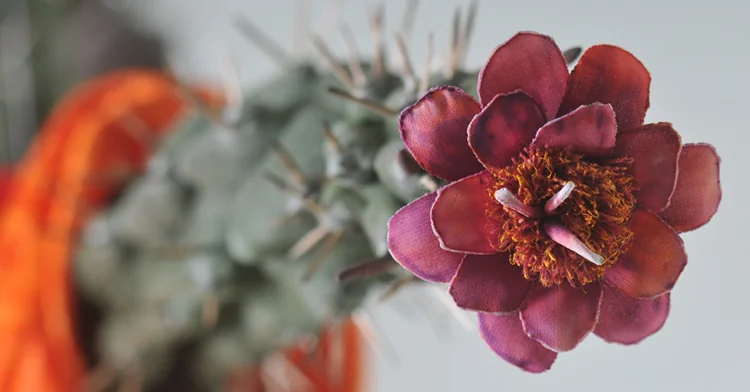
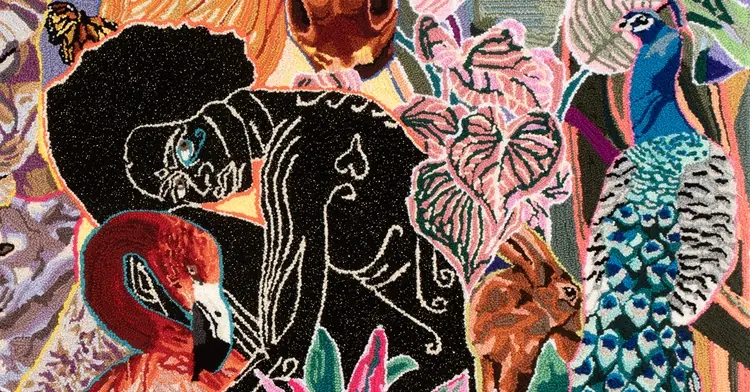
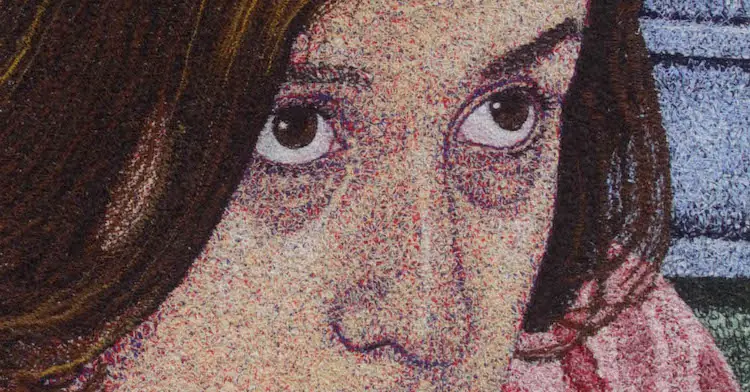
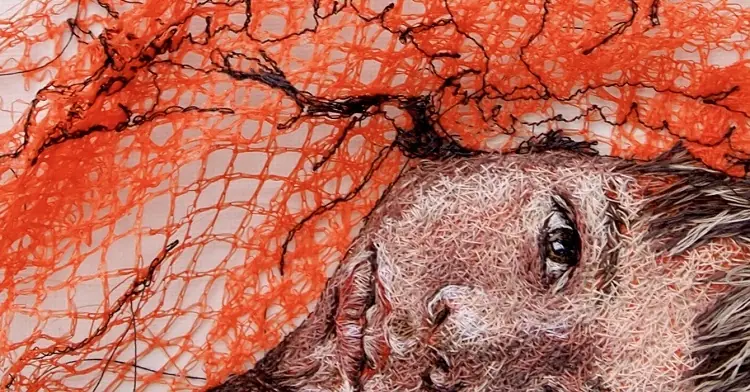
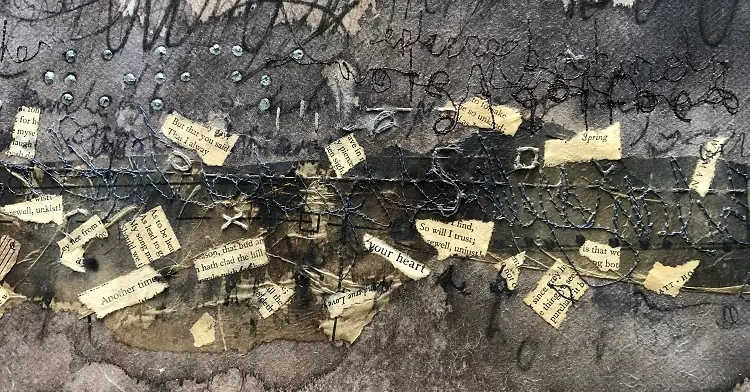
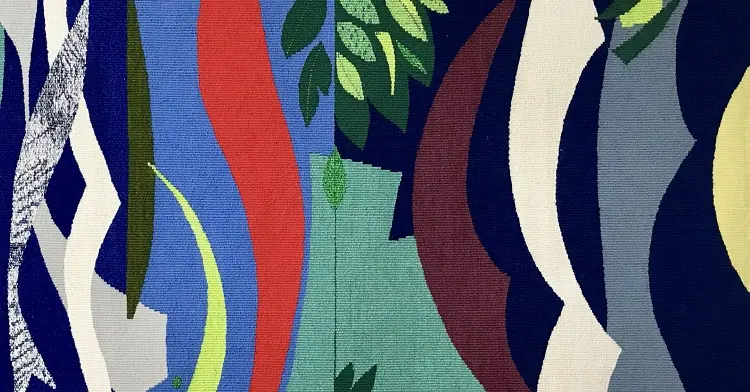
5 comments
Lin Fabian
I have enjoyed in the past needlefelting, nuno felting, boiling wool, but have not been able to in quite some time. I nuno felted in NYS with Polly Stirling back in those days and loved it. Looking forward to the workshop and learning from others. Appreciate the opportunity.
Gilly
Never done any felting before so looking forward to see and trying how its done.
Janet Woo
Having spent many holidays in a tent I can identify with the idea of ‘borrowed space’. I have tried both wet felting and needle felting and enjoyed the techniques. Looking forward to attempting something a bit more artitistic.
Amy Mimu Rubin
I am so thrilled to take a workshop with Jeannette Appleton. In 1998 I was on a visit to my daughter’s family in Cambridge UK, which is our second home (my husband and myself) and we purchased my first textile art piece at Contemporary Applied Arts and it has hung in our home ever since. It is a beautiful Jeannette Appleton piece. When the workshop starts I will post a picture of it. It is a magnificent small work of art .
Jeanette
Dear Amy
What a surprise that you brought a piece of my work in 1998 from the CAA and I look forward to seeing it. I lovely start to my first Stitch Club workshop, thank you.